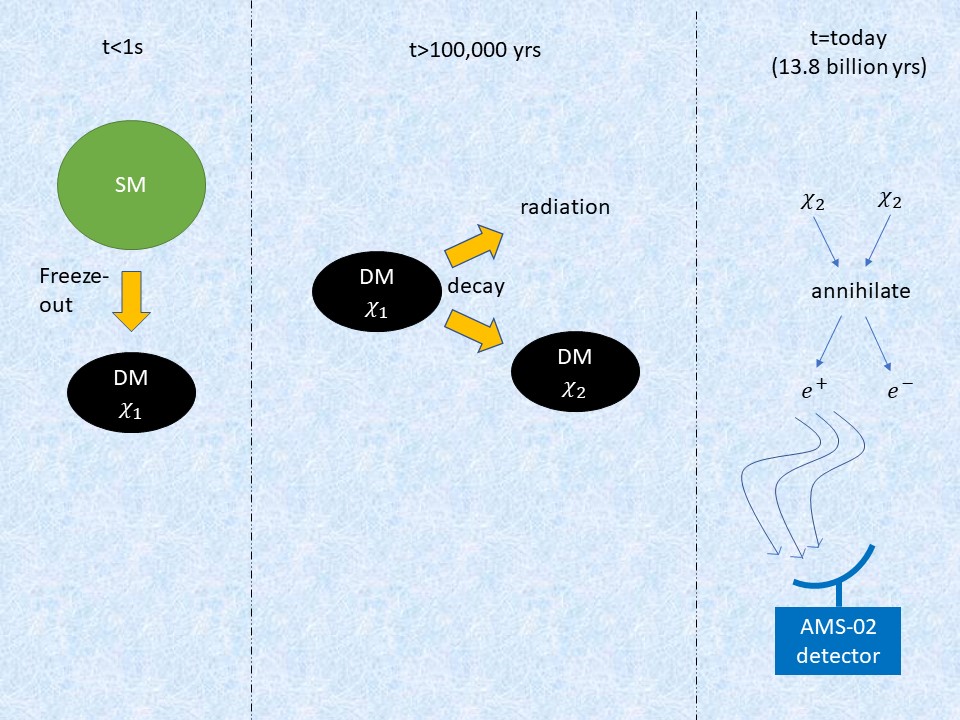
The earth is constantly bombarded with high energy cosmic rays, which is composed of protons, atomic nuclei, electrons, and also a little bit of anti matter like positrons and anti-protons. As these cosmic rays enter the earth, they react with particles in the earth’s atmosphere and produce a shower of other particles. Hence, to analyze the true composition of a cosmic ray, we need to put particle detectors at high altitudes. One such particle detector, called AMS-02, is aboard the International Space Station.
In 2014, AMS-02 detected an excess of positrons in the cosmic rays than what is expected. Now particle physicists have been kinda hoping for such an excess because a famous dark matter candidate, called WIMP, can cause an excess of positrons in the cosmic rays. This is because the dark matter forms a halo around the Milkyway galaxy, and if the dark matter is WIMPy then two dark matter particles in the halo can annihilate into positrons, among host of other particles. The positrons so produced will then travel to earth and show up as an excess than what is expected.
The problem is that the annihilation rate of WIMP dark matter is related to the density of dark matter we observe today (for reasons I won’t go into here), and the annihilation rate required to explain AMS-02 positron excess is orders of magnitude larger than the annihilation rate determined by dark matter density. So in our paper we motivate an extention to WIMP dark matter model that can resolve the above conundrum and also help ameliorate other cosmological tensions like ![]() and
and ![]() tensions. In particular, there are two components of dark matter: the first component is the WIMP dark matter whose density is related to annihilations, and the second component is the dark matter whose annihilations produce positron excess. The first component of dark matter is produced in the early universe which then decays into the second component of dark matter.
tensions. In particular, there are two components of dark matter: the first component is the WIMP dark matter whose density is related to annihilations, and the second component is the dark matter whose annihilations produce positron excess. The first component of dark matter is produced in the early universe which then decays into the second component of dark matter.
My main contributions in this project were in understanding the impact of such a model on the structure of dark matter halos and cosmological tensions like ![]() and
and ![]() tensions. Interestingly, we found that the abundance of dark matter halos provided one of the most stringent constraints on our dark matter model. In particular, when the first component dark matter decays into the second component, the second component is emitted with a kick velocity relative to the original component. This kick velocity, if large enough, can cause dark matter halos to evaporate. Since we observe dark matter halos, the strength of kick velocity is quite limited.
tensions. Interestingly, we found that the abundance of dark matter halos provided one of the most stringent constraints on our dark matter model. In particular, when the first component dark matter decays into the second component, the second component is emitted with a kick velocity relative to the original component. This kick velocity, if large enough, can cause dark matter halos to evaporate. Since we observe dark matter halos, the strength of kick velocity is quite limited.
The main bulk of the work for this project was done by Jatan Buch. If I recall correctly, he started working on this project in 2015, while I joined this project in mid 2016. While I had a relatively small role to play in this project, the project played a quite a big role for me as it was my first experience with a research project.
